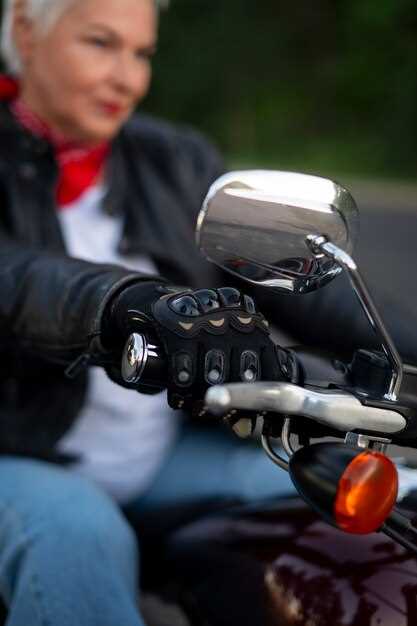

Night riding can be one of the most exhilarating experiences for cyclists, offering a unique perspective of familiar routes and the thrill of riding under the stars. However, it also comes with its own set of challenges and risks that require careful consideration. To ensure that your nighttime adventures are both safe and enjoyable, it is essential to equip yourself with the right knowledge and practices.
One of the key components of safe night riding is visibility. As darkness falls, the ability to see and be seen becomes significantly impaired. Investing in high-quality lights and reflective gear is not just a suggestion; it is a necessity. Lights not only illuminate your path but also help motorists and other cyclists recognize your presence. Reflective clothing or accessories can further enhance this visibility, making you stand out in low-light conditions.
Alongside visibility, it is crucial to adjust your riding style to suit the nighttime environment. When riding at night, awareness of your surroundings becomes paramount. Familiarity with your route is beneficial, as the dark can obscure potential hazards. Additionally, keeping a safe distance from other vehicles and cyclists will give you the reaction time needed to respond to unexpected obstacles. By adhering to these guidelines, you can create a night riding experience that balances thrill and safety.
Choosing the Right Gear for Night Visibility

When riding at night, ensuring maximum visibility is crucial for your safety. Start with reflective clothing that features high-visibility colors such as neon yellow, bright orange, or white. These colors are more easily seen in low light conditions, while reflective strips enhance your visibility to drivers and other cyclists.
Invest in a quality helmet equipped with a built-in light or one that allows you to attach a rear light. This not only improves your own visibility but also helps you be seen from behind. Consider wearing gloves with reflective elements as well; they can enhance signaling to other road users, making your intentions clear.
Your bike should also be outfitted with appropriate lighting. A bright front light is essential for illuminating your path, while a red rear light increases your visibility to traffic approaching from behind. Strobe modes can be beneficial in attracting attention, but make sure they are set according to local regulations.
Don’t forget about accessories such as pedal reflectors and wheel lights. These can contribute to your overall visibility and help other road users gauge your position. Lastly, ensure that your gear fits properly; loose clothing can become a hazard, potentially snagging on equipment or limiting your range of motion.
Implementing Safe Riding Practices After Dark
Riding at night presents unique challenges that require specific precautions to ensure safety. Firstly, visibility is crucial. Equip your bike with bright lights both at the front and rear. A white front light should be visible from at least 500 feet, while a red rear light aids in being seen from a distance. Consider wearing reflective clothing or accessories to enhance your visibility to other road users.
Additionally, route planning plays an essential role in nighttime riding. Choose well-lit, familiar routes with minimal traffic. Avoid isolated areas where help may be far away in case of an emergency. Using navigation apps designed for cyclists can also enhance safety by guiding you on safer paths.
Furthermore, awareness of surroundings becomes even more critical after dark. Stay alert for obstacles, road conditions, and the movements of vehicles and pedestrians. Ride at a speed that allows you to react quickly to sudden changes in your environment. This includes accounting for reduced visibility and potential hazards, such as potholes or debris, which are harder to see at night.
Incorporating communication signals can help keep you safe. Use hand signals to indicate turns and stops, as this helps other road users understand your intentions. Utilizing a bell or horn can also alert pedestrians and other cyclists of your approach in low-visibility conditions.
Lastly, consider riding with a partner or group. There is safety in numbers, and having someone accompany you can provide assistance in case of an incident. If riding alone is necessary, ensure you inform someone of your route and expected return time.
Navigating Common Night Riding Hazards

Navigating at night poses unique challenges that require heightened awareness and preparation. One of the most significant hazards is reduced visibility. Low light conditions can obscure potential obstacles such as potholes, debris, or wildlife. To counter this, invest in high-quality bike lights and reflectors. Front and rear lights improve visibility for both the rider and others on the road, while reflective gear enhances your presence.
Another common hazard is poor signaling. At night, drivers may struggle to see the indicators of cyclists. Always use hand signals to communicate your intentions, and consider adding electronic signal indicators to your bike. These devices increase visibility and ensure that motorists understand your movements.
Weather conditions can also pose risks during night rides. Rain can create slick surfaces, while fog decreases visibility further. Monitor weather forecasts before heading out and avoid riding in poor conditions. If you find yourself caught in inclement weather, slow down and maintain a safe distance from other vehicles.
Be mindful of your surroundings. Nighttime often brings out a different set of road users, such as impaired drivers. Stay alert and keep an eye on vehicles approaching from behind. Choose well-lit routes that are frequented by other riders or pedestrians to enhance safety.
Finally, fatigue can greatly impact your ability to ride safely at night. Ensure you’re well-rested before a night ride, and pay attention to your physical condition during the journey. If you feel tired or your vision starts to blur, find a safe place to take a break.





